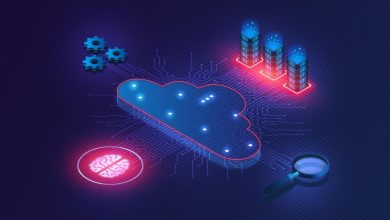Will Johor Develop Malaysia’s First ‘Smart City’? Schneider Electric Reveals Plans for Most Industry-Diverse Region in the Nation
Driving Efficiency and Sustainability Across the State for a Smart City Future

On the 29th of July 2025, Schneider Electric held its “Schneider Electric Innovation Day 2025” at the Renaissance Hotel in Johor.
The opening keynote of the event was given by Eugene Quah, Country President for Malaysia at Schneider Electric. Setting the tone for the whole event, Quah directly clarified that Schneider Electric’s ambitions for Johor are to drive efficiency and sustainability across the entire state.
Schneider Electric brought out all the stops at the event, displaying what seemed like practically every major product and solution on offer. Every product from a simple smart-building KNX Interface all the way to enormous grid-to-chip systems was on display. Familiar solutions such as EcoStruxure were on live demo screens along with Schneider’s Advisor Model for healthcare or smart buildings. Products and solutions were presented for all major industries that would be inside a city (manufacturing, data centres, healthcare, O&G, logistics, etc.).
So, why Johor?

Johor Just Makes Perfect Sense in So Many Ways
For some people, this question may seem to have an obvious answer given the region’s prominent data centre industry and Schneider Electric’s impressive Grid-to-Chip and Chip-to-Chiller portfolio. But let us look at the factors in detail. All these industries mentioned above are already prominent in the state of Johor. In this one region thrive data centres, port-based industries such as O&G as well as logistics. Solar farms have also been set up in Johor. The state also borders Singapore, so additional travel and hospitality-based companies are prominent, too. In a manner of speaking, this would make Johor a near-perfect place to envision a “Schneider-enabled” smart city given how many private and public verticals could benefit from their products and solutions.
Optimised operations and business mean more than just reduced energy costs and ROI for businesses. With services and products from organisations such as Schneider Electric, buildings, systems and infrastructure can achieve less maintenance downtime, search for possible improvement in operation and process speeds, and incorporate advanced features such as instant customisable settings for users. In short, all stakeholders benefit. If achieved on a city-wide scale, all citizens could benefit proportionately, too.
This line of thinking was expounded by Daniel Garcia Gil, Healthcare Technology Lead at Schneider Electric from Spain.
When explaining concepts such as predictive maintenance, digital twin application and performance optimisation from Schneider Electric’s Advisor Model, he shared the possibilities of smart buildings such as hospitals being able to use Artificial Intelligence analytics to adhere to suggested changes and updates to optimise the building’s operations and resources. This could include instantly changing individual unit/room settings such as temperature or lighting for specific patient needs. Depending on cases of patient visits, equipment usage or forecast usage, hospitals or health centres could predict maintenance requirements, while security measures could be suggested for increase should a high-profile individual/party visit the premises.
These features would undoubtedly be useful for numerous buildings and not only a hospital. Data centres, hotels, factories, laboratories, energy plants, agricultural plants, port-based rigs, and numerous other types of buildings could benefit immensely from such applications. These buildings and companies can have so many moving parts both internally and externally influenced, and so it is fascinating to think of how the development of their operations could advance in the near future with technology such as Schneider Electric’s solutions.
Schneider Electric: Leading the Way Forward
Schneider Electric already has a foothold in Johor for at least some of these buildings—most notably data centres, as pointed out previously. While Schneider’s ambitions to provide their technology across multiple verticals are evident, data centres are where they wish to continue to spread influence globally and in Southeast Asia.
This idea was heavily supported by high-profile people such as Isaac Goh, General Manager, Data Centre Architecture and Delivery for Telekom Malaysia, whom Schneider Electric was fortunate enough to have on their panel together with Wei Linyun, Vice President, Strategy & Marketing, East Asia, at Schneider Electric. Both were not only aligned with data centres in Malaysia but also the growing and unavoidable issue of liquid cooling.
As observed by yours truly based on prior visits to data centres in Johor, awareness and increased consideration of liquid cooling is crucial—and so Schneider Electric’s vertical Motivair had its own important part to play in the event by demonstrating its cooling solutions. ESG and sustainability are not terms for fancy social credit points for marketing—they are supported by serious environmental considerations and are gradually becoming integrated into policy in Southeast Asia. Bursa Malaysia Securities Berhad has even made it mandatory for companies listed on the Main Market and ACE Market to include narrative statements of management of material economic, environmental and social risks and opportunities.
With the world so set on jumping forward into a new era of tech, it is a relief to know that a few companies have the foresight to look at the future issues and obstacles to overcome. At the Schneider Electric event, it was pleasant to see new faces and some familiar ones who belong to important industry-leading groups in Malaysia. Their consideration of sustainable yet efficient operations is also a breath of fresh air and a reason to believe that a sustainable digital future is actually possible.




